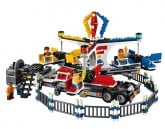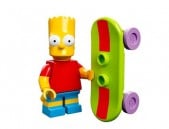Find Our Latest Video Reviews on YouTube!
If you want to stay on top of all of our video reviews of the latest tech, be sure to check out and subscribe to the Gear Live YouTube channel, hosted by Andru Edwards! It’s free!
Latest Gear Live Videos
PS3: Expensive, But Not 3DO Expensive
Posted by Christopher Sasaki Categories: Culture, E3, PlayStation 3,
 Time for a little perspective on the price of the PS3; yes, $500 - $600 is somewhat shockingly high given the pricing of the Xbox 360, and historical console launches. But gamers should remember that the 3DO launched at a wallet-busting $700, so the PS3 isn’t the highest priced console ever. Of course, the 3DO burned up in a fiery crash, and the resulting corpse died a slow, lingering death when the Playstation came around. But Curmudgeon Gamer also lists console pricing adjusted for inflation. Both the Atari 2600 and the Intellivision both cost more in inflation-adjusted dollars than the Playstation 3, which gives Sony some hope that their price point isn’t going to be a killer. Still, it will be the highest priced console in this and the previous generation in adjusted dollars. Since 1995, the only console to launch with a higher adjusted price was the lamented Sega Saturn. Sega lost that battle to the Playstation, and it should also be noted that when the Playstation launched, the Saturn’s price was brought down to $299. So historically, looking at the successes and failures at particular price points, Sony is definitely on the high end. It’s not the highest priced console around, and price is only one of many factors used when consumers make purchase decisions. It’s doubtful the high price will have that much of an effect on early adopters, considering the high prices many were willing to pay for the Xbox 360 on the secondary market, but past that first wave of purchasers, Sony may have a problem.
Time for a little perspective on the price of the PS3; yes, $500 - $600 is somewhat shockingly high given the pricing of the Xbox 360, and historical console launches. But gamers should remember that the 3DO launched at a wallet-busting $700, so the PS3 isn’t the highest priced console ever. Of course, the 3DO burned up in a fiery crash, and the resulting corpse died a slow, lingering death when the Playstation came around. But Curmudgeon Gamer also lists console pricing adjusted for inflation. Both the Atari 2600 and the Intellivision both cost more in inflation-adjusted dollars than the Playstation 3, which gives Sony some hope that their price point isn’t going to be a killer. Still, it will be the highest priced console in this and the previous generation in adjusted dollars. Since 1995, the only console to launch with a higher adjusted price was the lamented Sega Saturn. Sega lost that battle to the Playstation, and it should also be noted that when the Playstation launched, the Saturn’s price was brought down to $299. So historically, looking at the successes and failures at particular price points, Sony is definitely on the high end. It’s not the highest priced console around, and price is only one of many factors used when consumers make purchase decisions. It’s doubtful the high price will have that much of an effect on early adopters, considering the high prices many were willing to pay for the Xbox 360 on the secondary market, but past that first wave of purchasers, Sony may have a problem.
Read More  | Curmudegeongamer.com
| Curmudegeongamer.com
Gallery: PS3: Expensive, But Not 3DO Expensive
Advertisement
Parents Sue Game Distributor Over Son’s Suicide
Posted by Christopher Sasaki Categories: Culture, Internet,
 According to a news report from the Xinhua newspaper, a 13 year old Chinese boy committed suicide after playing Warcraft for 36 hours at an Internet cafe in 2004. These reports state that the child threw himself out of a 24th story window in “honor of the heroes of the game he worshipped.” The parents are now suing the Chinese game distributor, Aomeisoft, for 100,000 Yuan in damages, and to try to have a warning label placed on the software about Internet addiction. The parents had originally tried to sue Blizzard, but the Chinese court blocked this action.
According to a news report from the Xinhua newspaper, a 13 year old Chinese boy committed suicide after playing Warcraft for 36 hours at an Internet cafe in 2004. These reports state that the child threw himself out of a 24th story window in “honor of the heroes of the game he worshipped.” The parents are now suing the Chinese game distributor, Aomeisoft, for 100,000 Yuan in damages, and to try to have a warning label placed on the software about Internet addiction. The parents had originally tried to sue Blizzard, but the Chinese court blocked this action.
The loss of a life at such a young age is a horrible tragedy, but allowing any person of any age to play a game for 36 hours straight can be dangerous. With a young child, this can only be more so. It is hard to believe that a warning label about addiction could be effective when the parents don’t even notice a marathon gaming session. Apparently, abdication of parental responsibility is a global phenomenon. It is sad to hear of such instances of neglect, but suing the game developer or publisher hardly seems like a way to ensure that such tragedies do not repeat themselves.
Read More  | Xinhuanet.com
| Xinhuanet.com
Gallery: Parents Sue Game Distributor Over Son’s Suicide
 Rumors had been circling for a while that Yuji Naka, famed head of Sega’s internal development studio Sonic Team, was going to be leaving Sega. Finally, on May 8th, the rumors were confirmed that as of June 1, 2006, Naka would be leaving Sega and forming his own development studio, Prope. The Prope website leaves this little explanation for the name:
Rumors had been circling for a while that Yuji Naka, famed head of Sega’s internal development studio Sonic Team, was going to be leaving Sega. Finally, on May 8th, the rumors were confirmed that as of June 1, 2006, Naka would be leaving Sega and forming his own development studio, Prope. The Prope website leaves this little explanation for the name:
“PROPE” (pronounced “pro-pe”) is a Latin word which means “beside” and “near” future.
We named our company PROPE in the hopes of bringing game entertainment much closer to users, establishing closer ties between users and us, and creating near future entertainment.
Naka isn’t cutting off all ties with Sega; Sega will be investing 10% of the $90,000 startup cost for the studio, and the US and European branches of Sega have already committed to publishing games from the new development house. The reasoning behind the split is less clear, and Business Week has a few ideas on why this might have happened.
One issue is Sega’s current lack of A-list titles on the market; since the Dreamcast failed, Sega’s game quality has been by and large sliding. Certain properties, like Virtua Fighter and Super Monkey Ball have been hits in the past, but they really haven’t been the mega-hits like Sonic was when it first hit the States. Sega might have felt that shaking up more of its development studios would help get some creativity and originality back. Certainly, this happened when Sega originally divided the various AM teams into more segmented studios, but in time, most of the developers either left Sega or were folded back into the corporation.
It is also possible that the slide of recent Sonic games into kind of a B-list property may have forced Sega’s hand in pushing Naka away. Certainly there is precedent for this; Gunpei Yokoi, creator of the Gameboy, would be one such story. Despite the huge success of the Gameboy, the failure of the Virtual Boy would lead to his ouster. This could be a strong possibility for letting Naka go, while still keeping some ties in case he can “recapture the magic” in the eyes of Sega corporate. Or, this could be just a case where Naka felt like his options were constrained working in the Sega environment. This seems a little less likely, since Sega has allowed Naka a great deal of leeway in the past to pursue other projects.
Ultimately, while Sega is keeping some measure of connection to Yuji Naka, having the creator of one of the most important franchises in Sega history is a huge moment, and hopefully, Naka can unleash more creativity in the future to bring great gaming to the public.
Read More  | Businessweek.com
| Businessweek.com
Gallery: Yuji Naka Forms Prope
Chris Bateman at the Only A Game weblog has parsed through a first pass at the results from their recent DGD survey. The survey sought to isolate game play styles from gamers that identify themselves as either hardcore, casual or unknown. From there a series of questions was asked to attempt to determine if there were fundamental differences between how gamers that identify themselves as hardcore play games and those consider themselves more of a casual gamer. The survey tracked 319 respondents, not a particularly huge sample size, and the survey sample may not have been a really varied cross-section of the gaming public, but the results are interesting nonetheless. The largest finding so far is that “hardcore” gamers did not play games in a significantly different way than the average respondent. However, there were differences in some survey questions that did have a statistically significant variance between “casual” and “hardcore” gamers: essentially, the hardcore gamer will values mastery of a game and completion more than a casual gamer, and will generally be more concerned about a game’s difficulty level.
Read More  | Only A Game
| Only A Game
Read More  | DGD1 Survey
| DGD1 Survey
Gallery: DGD Survey: Hardcore vs Casual Gamers

Nintendo, perhaps feeling lonely after much of the fury over “Wii,” is now trying to hitch on to the DaVinci Code meme, with its own little puzzle, “The Luigi Code.” The “news” article promises E3 secrets, if only the reader can crack the code. The page leaves oddly capitalized letters interspersed within the document, a big clue to the nature of the code right there. Of course, impatient readers can just head over to Infendo, and get the cracked code. Not since “A Christmas Story” has a decrypted message not lived up to the hype.
Read More  | The Luigi Code
| The Luigi Code
Read More  | Solution at Infendo.com
| Solution at Infendo.com
Gallery: The Luigi Code
The Library of Congress is currently investigating how to best preserve media in digital formats, including video games, according to a report from GameDaily.biz. The initiative, called “Preserving Creative America,” seeks to “collect and preserve the historic and cultural heritage of America, much of which is now being created only in digital form with no analog (physical) equivalent.” In accordance with this initiative, last month the Library held meetings with content producers in various digital media from a variety of fields including video games.
A large amount of content is currently being created in digital form; some of the Internet-based content is being collected by the Internet Archive at archive.org, but there are terabytes of digitally created information that is not being kept in any way. Certainly a strong argument can be made for the impact that video games have had on society. Many of the video game world’s icons have transcended the format, moving into other media and into the cultural consciousness, including figures like Mario and Lara Croft. Other games, like Mortal Kombat and Grand Theft Auto attracted attention due to their notoriety. Preserving video games and other digital media may become important in understanding the cultural touchstones of the United States.
Read More  | Gamedaily.biz
| Gamedaily.biz
Gallery: Library of Congress May Include Video Games
 Microsoft recently commisioned a report from Sperling’s BestPlaces, in order to find out the best cities in America for video gaming. The metrics that were used include: “number of video game systems owned per household…number of games purchased, number of game rentals, and frequency of online gameplay via Xbox Live or Windows games, among other factors.”
Microsoft recently commisioned a report from Sperling’s BestPlaces, in order to find out the best cities in America for video gaming. The metrics that were used include: “number of video game systems owned per household…number of games purchased, number of game rentals, and frequency of online gameplay via Xbox Live or Windows games, among other factors.”
Given the relatively high geek factor in the area, and the fact that two of the three current video game console producers have their headquarters in the Seattle-Bellevue-Redmond area, this isn’t a particularly surprising result. But “best video gaming city” doesn’t seem like it would be a particularly good tourist draw; if anything, one would think this would detract people from coming. Also, with Xbox Live such a strong component of the survey, this would seem to make almost any city with decent broadband a good place to get your game on.
There certainly doesn’t seem to be a correlation between best gaming city and the Sperling “Best Places to Live” list; Seattle scores a dismal 88th on that list, with only Atlanta sharing a top ten spot on both lists. Seattle also scores really high on the “Most Stressful Cities” list. While Tacoma takes the top spot, Seattle is no slouch at number 11 on that list. Maybe the stress levels encourage playing a little more Grand Theft Auto than other cities. Shockingly, Seattle is ranked 5th on the list for best cities for dating, and 5th on the health list as well. Perhaps that speaks to how much Seattleites need those stress breaks, and how much they enjoy their recreation.
At any rate, the full list and press release is after the jump.
Click to continue reading Seattle Top Gaming City
Gallery: Seattle Top Gaming City
 If you have ever wanted a chance to take on your hamster in one-on-one combat, this might be your chance. According to Wired.com, the Researchers at Emerging Art and Architecture Research Group, or RASTER, and Singapore’s Mixed Reality Lab are working to build integrate virtual worlds with reality to make this happen. RASTER’s technology in development allows a human to control a digital character that maps to the location of a piece of bait for the hamster. The hamster, chasing after the bait, is mapped through a specialized environment so that its movements are translated into the digital arena. Wired states that the group hopes to have a functioning prototype by November, with other games in the works as well. Game interaction is very rudimentary right now, but future applications could give insights into animal behavior as well as more complex mixed-reality games. For the time being, virtual reality gamers will have to content themselves with fighting it out with rodentia.
If you have ever wanted a chance to take on your hamster in one-on-one combat, this might be your chance. According to Wired.com, the Researchers at Emerging Art and Architecture Research Group, or RASTER, and Singapore’s Mixed Reality Lab are working to build integrate virtual worlds with reality to make this happen. RASTER’s technology in development allows a human to control a digital character that maps to the location of a piece of bait for the hamster. The hamster, chasing after the bait, is mapped through a specialized environment so that its movements are translated into the digital arena. Wired states that the group hopes to have a functioning prototype by November, with other games in the works as well. Game interaction is very rudimentary right now, but future applications could give insights into animal behavior as well as more complex mixed-reality games. For the time being, virtual reality gamers will have to content themselves with fighting it out with rodentia.
Read More  | Wired.com
| Wired.com
Gallery: Man Versus Mouse
March 2006 Game Sales Down 8%, Hardware Down 31%
Posted by Christopher Sasaki Categories: Corporate News, Culture,
Gamasutra posted some excerpts from the latest NPD report on game and hardware sales for the month of March. Game sales slipped year over year by 8%, dropping to $499 million. Hardware dropped 31% to $220 million. Last year had some very high profile titles for the PS2 ship, and also saw the launch of the PSP, making for an unusually high hardware and software sales. Of course, this year is being marked as a transition year for game consoles, since the Xbox 360 has already shipped, and gamers wait in anticipation for the PS3 and the Revolution to hit the stores. March was still a bad month to try and buy an Xbox 360, since Microsoft still really hadn’t had their distribution and manufacturing situation ironed out, and this definitely contributed to lower software sales, since some eagerly anticipated titles for the Xbox 360 shipped, including Elder Scrolls: Oblivion and Ghost Recon: Advanced Warfighter. Titles like Metroid and Tetris probably helped make the drop less than expected, but aside from Metal Gear Solid 3: Subsistence there weren’t a lot of widely-appealing games shipping on the PS2. The next few months probably won’t bring much relief to this situation, particularly as the next generation console launches from Nintendo and Sony grow ever closer.
Read More  | Gamasutra
| Gamasutra
Gallery: March 2006 Game Sales Down 8%, Hardware Down 31%
Character Design in Rayman and Final Fantasy
Posted by Christopher Sasaki Categories: Adventure, Culture, Role Playing Games,
Eurogamer reports on a unique panel at the recent Carrefour de l’animation (Animation Crossroad) in Paris, France. The animation conference featured two influential figures in gaming. Yoshitaka Amano, who contributed character designs for the Final Fantasy series and who also illustrated the Vampire Hunter D series and Neil Gaiman’s Sandman: Dream Hunters was present, as well as Michel Ancel, most known for the Rayman series of games that have appeared on virtually every console from the Sega Saturn on, and the game Beyond Good and Evil, which achieved critical acclaim but not equivalent sales.
Click to continue reading Character Design in Rayman and Final Fantasy
















